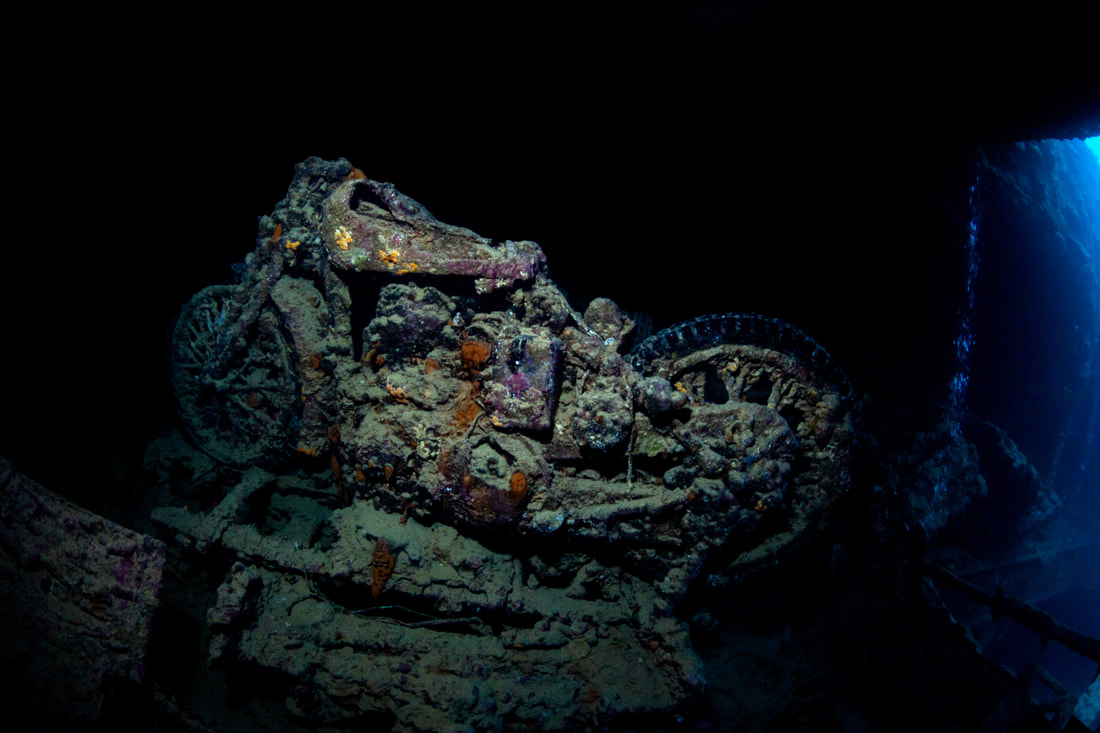The Thistlegorm made three voyages to America, Argentina, and Dutch Antilles before its fateful and final voyage in the Egyptian Red Sea. On October 6, 1941, the ship and several other military vessels were discovered by German forces while at anchor in a safe harbour. During the bombing raid that followed, the hull was struck twice, resulting in catastrophic damage, and the Thistlegorm sank rapidly, claiming nine lives.
All but 9 of the crew escaped and the HMS Thistlegorm reached its final resting place 30m deep on the sandy sea bed, where she lies upright with her stern section separated from the main body by 20m. The ship is largely intact except for the impact area but the split hull reveals the invaluable cargo, where trucks, motorbikes, a train and even Wellington boots can be seen.
On the stern the guns remain in excellent condition and the blast area is littered with artillery. The site offers so much to see that it takes 2 days of diving just to orientate yourself. Diving inside this section of the SS Thistlegorm you'll find BSA motorbikes, Morris automobiles, Bedford trucks, trailers and armoured cars, stowed tightly away as if still ready for use, many still with rubber tyres and glass windows intact.
We did two dives on the historic wreck, two incredible dives in a strong current. Experiencing history first hand is a special privilege. Ironically the red fish in one of the motorcycle shots are "soldier fish"

 RSS Feed
RSS Feed